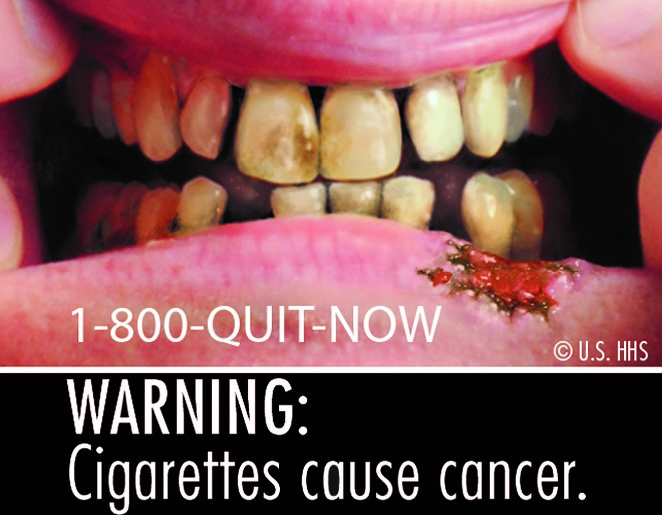
Can you scare kids into not smoking? That’s the premise behind a variety of programs that have placed graphic warnings on billboards, in magazine advertisements, and on packs themselves.
Unfortunately, there is evidence such campaigns can be counterproductive. And new research examining the effects of a specific approach on a particularly vulnerable population suggests it might do more harm than good.
It reports placing graphic anti-smoking posters at a store that sells tobacco products actually increased susceptibility to smoking among teens who are already at risk of starting the habit.
“Our findings are counterintuitive, and suggest that some anti-smoking strategies may actually go too far,” lead author William Shadel, a senior behavioral scientist at the Rand Corporation, said in announcing the results. It’s published in the journal Nicotine and Tobacco Research.
To measure behavior in something close to a real-world environment, the researchers utilized Rand’s “StoreLab,” a full-sized replica of a convenience store in Pittsburgh. It featured an anti-tobacco poster, which was dominated by “a close-up photograph of a diseased mouth and gums, with a text warning that reads ‘cigarettes cause cancer.'”
The image was created by the Food and Drug Administration for potential use on cigarette packs; it was selected because teens in previous studies found it particularly effective. New York City attempted to mandate the display of similar posters in convenience stores, but was stopped by the courts.
The poster was either placed at the cashier, on the wall next to an array of ads for tobacco products, or at both locations. A control group of about one-quarter of the kids visited the store when the poster was not on display at all.
The participants were 441 adolescents between the ages of 11 and 17. Each was given $10 and instructed to shop “for whatever items they wanted, for as long as they wanted.”
Before and after their visit, they filled out a survey designed to measure the likelihood they might start smoking. (Only 5 percent said they were smokers, or had smoked in the past.)
Specifically, they responded to three questions: “Do you think you will try a cigarette any time soon?”; “Do you think you will smoke a cigarette any time in the next year?”; and “If one of your best friends offered you a cigarette, would you smoke it?” They answered each on a scale of one (definitely not) to 10 (definitely yes).
Shadel and his colleagues report kids who were at low risk of starting to smoke, based on those answers, were unaffected by the presence or placement of the poster. Their “susceptibility to smoking was uniformly low,” they write.
But, to their surprise, they found their peers who were at higher risk of smoking were actually more susceptible after seeing the poster. It had precisely the opposite of its intended effect.
The researchers aren’t sure why. Perhaps placing the poster so close to tobacco advertising “oriented at-risk adolescents not toward the anti-smoking message … but toward the vast array of tobacco-related stimuli” on the nearby wall. These ads may have “functioned as a sort of smoking cue,” they write.
Alternatively, “It is possible that at-risk adolescents responded to the graphic warning posters in a defensive manner, causing them to discount or downplay health risks portrayed in the poster.”
Shadel concludes that “policymakers should be careful when considering graphic warning posters as part of anti-tobacco education in retail environments.” Gruesome images capture people’s attention, but they may not influence their behavior in the way their creators intended.



